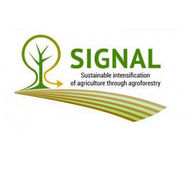Trees in silvopastoral systems reduce legume proportion with no consequence for internal N resorption efficiency (2023)
Schmiedgen A., Komainda M., Kayser M., Tonn B., Isselstein J.
Journal of Plant Ecology, 16 (3),
Abstract
AbstractIn legume-based grasslands, legumes supply the sward with nitrogen (N) from biological N2-fixation. Previous studies in silvopastoral systems have emphasized that legume proportions decline near trees which would cause spatial variation in the N supply and the concentration of N in the harvested herbage of grass swards between trees. In natural ecosystems, it was shown that the N resorption efficiency (NRE) was increased by nutrient limitation, hence, near trees where legumes are scarce. Therefore, we tested the hypothesis that the NRE is increased near trees and compensates for the loss of legumes with respect to N concentration in live herbage. Two vegetation compositions consisting of legume-based grass swards were analysed across positions between tree lines in an alley cropping system established 5 years prior to this study. Legume proportion declined up to 45% towards the tree line, and also N concentration in live and dead herbage but on average only declined by 15%. As a consequence of a reduced N concentration and also herbage mass close to trees, the N yield decreased by up to 50%. Despite the loss of legumes near trees, the NRE was unaffected by the tree line irrespective of vegetation composition. Further, the results indicate that internal N cycling of managed grass swards in silvopastoral grassland with short defoliation intervals between harvests is of lesser relevance than in unmanaged ecosystems. Legume proportions control the N concentrations of live and dead herbage irrespective of tree shading in silvopastoral systems.
